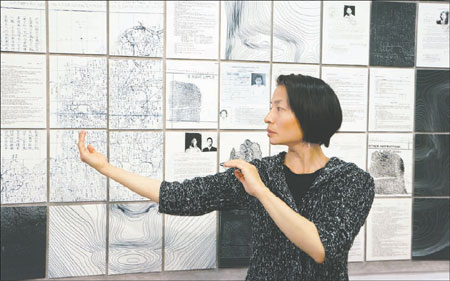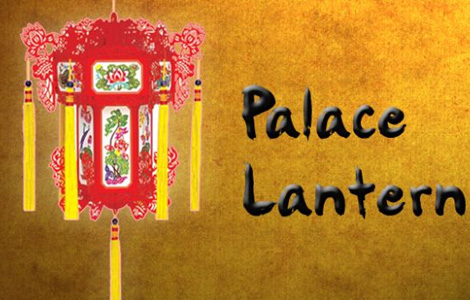Artist explores a dark chapter
Updated: 2013-06-14 13:23
By Chen Jia in San Francisco (China Daily)
|
||||||||
|
Choreographer Lenora Lee examines her immigrant grandparents' past through her research and artistic creations. Chen Jia / China Daily |
California-born artist Lenora Lee believes the most romantic story in the world is a sealed memory left by her Chinese grandparents about 90 years ago.
"A discrimination law used to force my grandparents apart, husband in San Francisco while his wife's in China. It took them 10 years of waiting and struggle to be together," the 39-year-old dancer and choreographer told China Daily at the de Young Museum in San Francisco recently.
Creating works that are both personal and historical to her own family, Lee is in the process of developing two performances, The Escape and Rescued Memories, both of which are inspired by stories of Chinese women who immigrated to the US in the late 1800s and early 1900s.
As a de Young Artist Fellow, Lee brought The Escape to the museum on May 17 in a free performance open to the public.
"My initial hope was to be able to share these stories (through various artistic disciplines) in a creative and compassionate way that would provide insight into the experiences, hardships, challenges, triumphs, and transformations of the people in these Chinese-American communities over the years," she said. Lee started her research in 1996 as an exchange student from UCLA at Peking University.
What inherently came along with the process and research was an education for herself, the cast, and ultimately the audience on the subject of human trafficking and the hardships imposed by the Chinese Exclusion Act of 1882, she said.
As part of an early generation of Chinese immigrants, Lee's grandparents seldom talked about their history with Lee, one reason being that they had to come to the US under false names. They were called simply "Paper Son" or "Paper Daughter".
In the early 1920s, her grandfather had left Taishan, a farming village in China's southern Guangdong province, and landed at San Francisco's Angel Island, which was being used at the time as a US Bureau of Immigration inspection and detention facility.
Like most Chinese immigrants to the US at the time, Lee's grandfather had to use a fake name to stay in the US because of the Chinese Exclusion Act. Approved in 1882 and stuck on the books for 60 years, it was one of the most restrictive laws on free immigration in US history and the only federal act that excluded a single race of people from immigration and naturalization.
Life was hard for early generations of Chinese immigrants, who could not find work outside of Chinatown. Lee's grandfather could not afford to buy the fake identification papers, which cost as much as $3,000, needed to bring his wife over from China. Desperate and in despair, he wrote a letter back to her in China and asked her to marry someone else if she didn't want to wait.
"I will wait for you until I die!" his wife replied and her letter gave him new hope. Ten years later, reunited at last, the couple was able to settle down and start a family in San Francisco.
Lee's research also received support from the Donaldina Cameron House, a Chinatown-based organization named for the missionary who provided a haven for thousands of young Chinese women throughout the Exclusion Era, women who had come to the United States imagining they'd find a better life, but instead were forced by traffickers into lives of domestic servitude or prostitution, Lee explained.
Lee said the Cameron House has extensive archives that have become "my sources of artistic creation". Lee herself remembers attending their Friday night youth programs and educational services as a child.
She has spent hours in the archives, reading court documents and handwritten letters between female immigrants and the missionaries who helped them by providing shelter and gaining legal custody of women trapped in bad situations.
"My hope is to allow the stories to be a catalyst for dialogue and for sparking interest in understanding the deeper issues," Lee said. "I hope these stories provide a voice for those who cannot and could not share the burden and the pain of their experiences."
Her work also serves as an avenue to share and rejoice in the courage, strength and resilience of the Chinese and Chinese-Americans who over the years built the vibrant Chinese-American communities into what they are today and highlight our tremendous contributions to the American society, she said.
For the upcoming Rescued Memories: New York Stories project that will premiere at the de Young Museum along with The Escape on November 8 & 9, Lee would like to work with Asian or Asian American dancers both in the Bay Area and in New York City to develop an intergenerational chorus of dancers representing the Chinese-American community of that time period.
Lee said they will premiere both pieces in New York City in the spring of 2014.
"It is my hope to be able to find support so that we can share the works more extensively on the national and international levels in the future," she said.
chenjia@chinadailyusa.com
(China Daily USA 06/14/2013 page11)
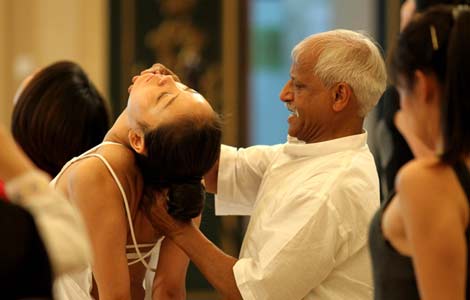
 Breathe deep, this is the real thing
Breathe deep, this is the real thing
 Families of crash victims in SF
Families of crash victims in SF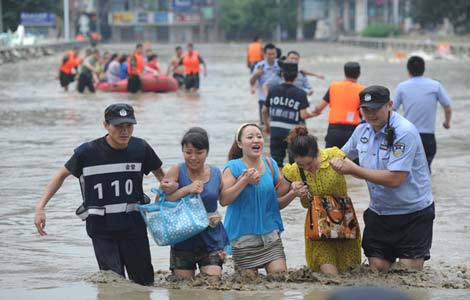
 Rainstorms cause severe flooding and landslides
Rainstorms cause severe flooding and landslides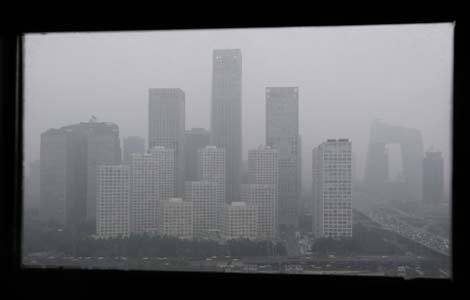
 Coal burning in China's north can shorten lives
Coal burning in China's north can shorten lives
 Some solar companies see brighter first half
Some solar companies see brighter first half
 Thousands flock to Texas Capitol over abortion
Thousands flock to Texas Capitol over abortion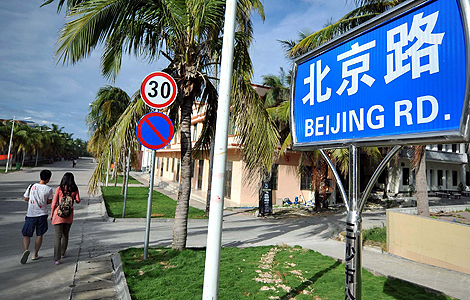
 China's youngest city glistens under palm trees
China's youngest city glistens under palm trees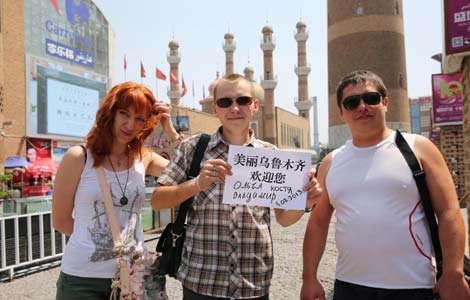
 Xinjiang tourism recovering
Xinjiang tourism recovering
Most Viewed
Editor's Picks

|

|

|

|
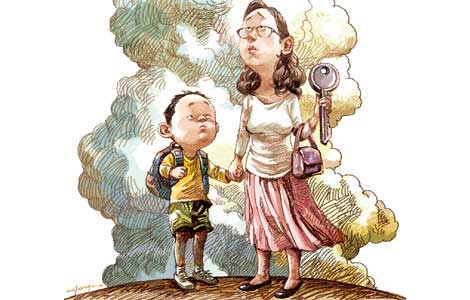
|

|
Today's Top News
China, US hold cyberissues talks
Shenzhen Red Cross denies organ claim
Security in cyberspace 'still major problem'
Headwinds may buffet growth
Rainstorms cause severe flooding and landslides
Li reassures sugarcane farmers
Japan tags China as 'security threat'
Honesty is a challenge for CPC
US Weekly

|

|
